How deep to plant bulbs – get the depth right to guarantee your blooms
Take out the guesswork and discover the right depth to plant the most popular bulb varieties

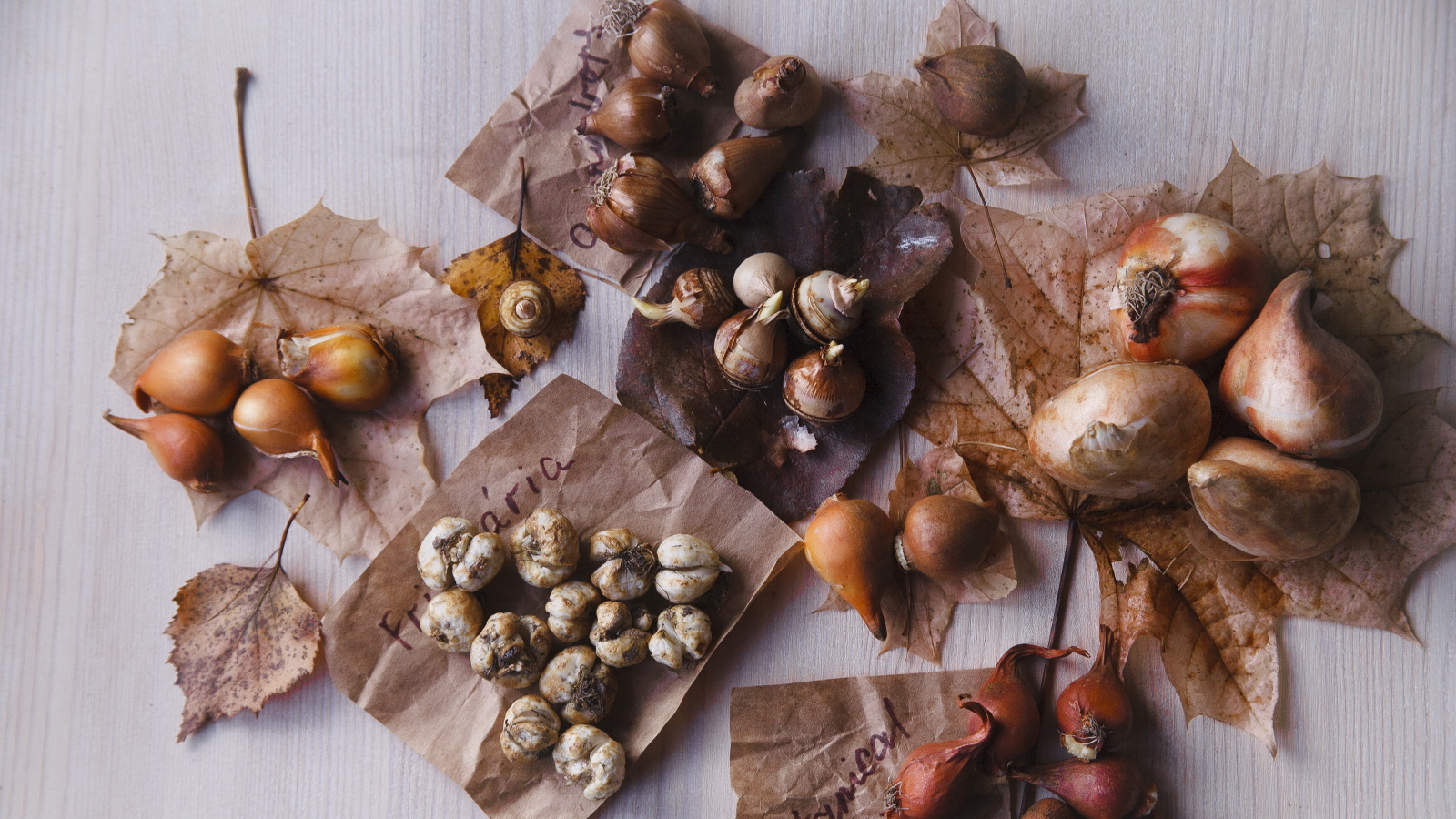
Bulbs are a simple and fantastic way to add a huge variety of seasonal blooms to your backyard. They come in lots of shapes, colors and forms, and provide interest for years to come.
As well as getting the location right, a skill to planting bulbs is to get the planting depth just right so the bulb can thrive. It can feel like a bit of an exact science. Too shallow and the bulbs can be exposed to cold temperatures, while they are also at greater risk of being dug up. If you plant bulbs too deep, then flowers may bloom too late or even not at all.
The general rule is to plant bulbs at two-to-three times their depth, though the exact size of any planting hole will depend on the size of the bulbs you are planting. We take a closer look at the ideal depths required for some of the most popular garden bulbs to guarantee you a bumper show.
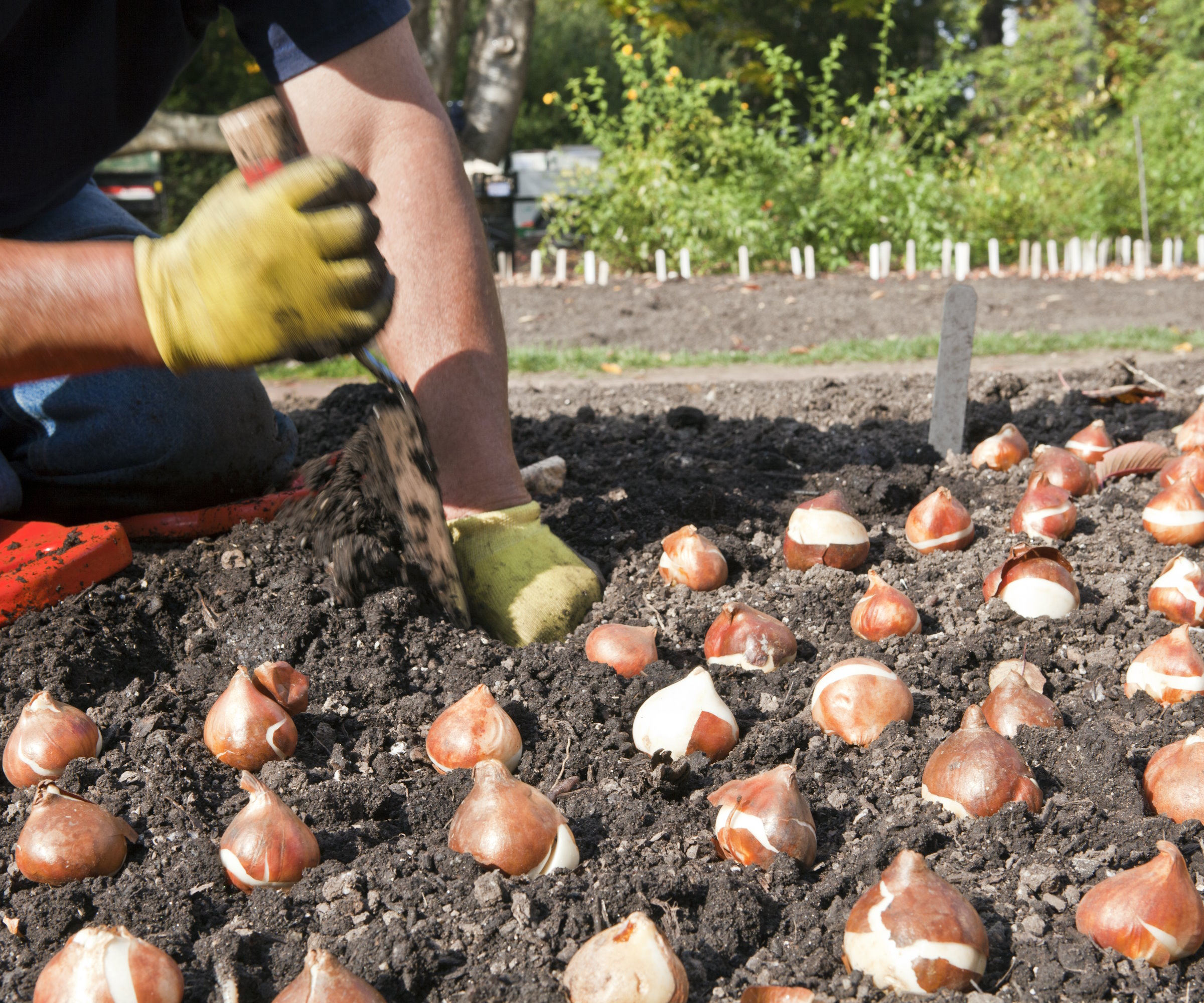
Many types of bulbs are planted in swathes for a dramatic effect
Tools for bulb planting
Planting bulbs is a simple and quick way to add lots of seasonal color, whether it is in flower beds in pots. You only need simple garden tools, such as a trowel, to plant bulbs and different types can be planted in spring or fall. Using a bulb planter can make the job simple and painless, especially if you are planting lots of them. A useful example is this Bulb Planter with Depth Mark, available at Amazon.
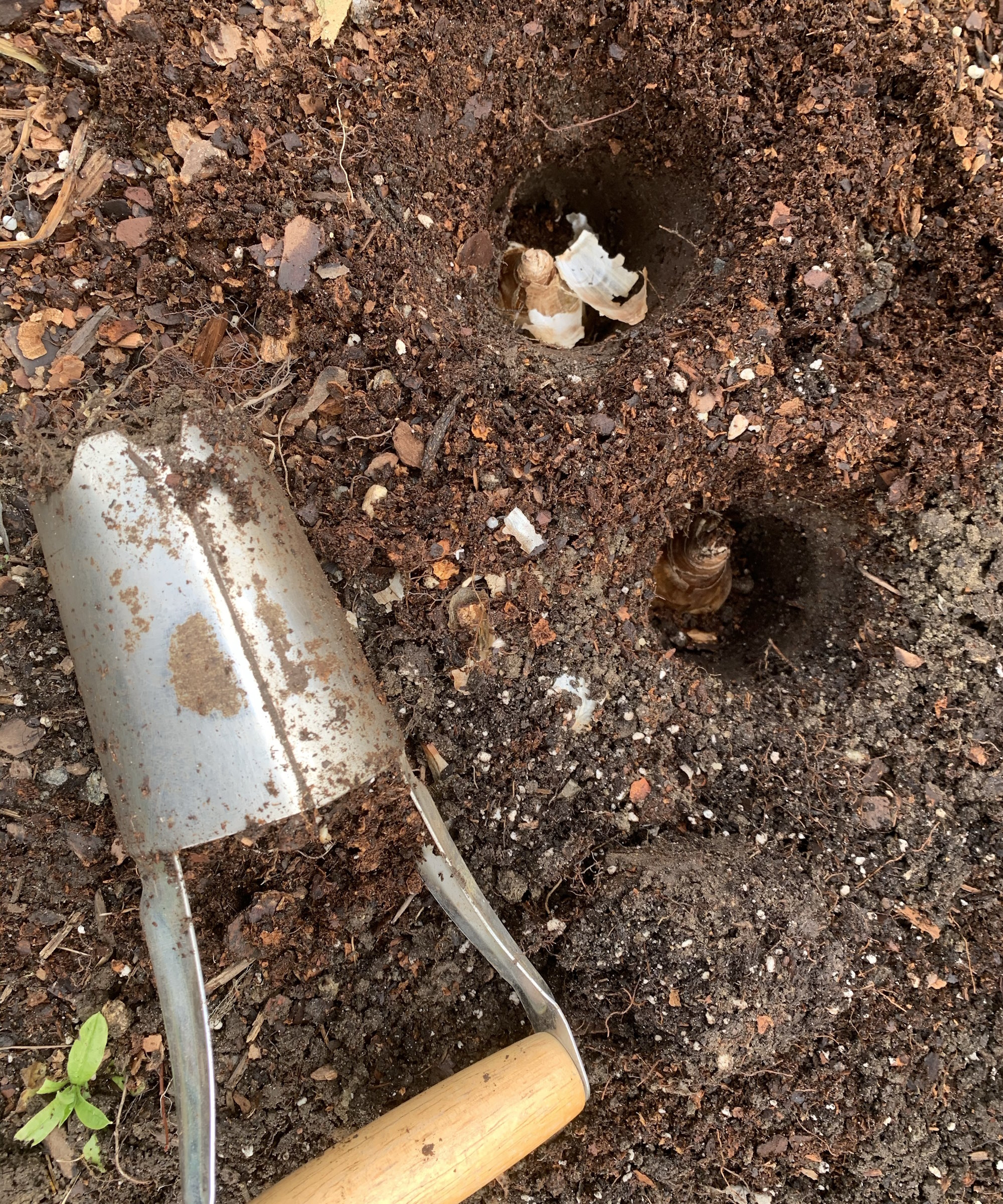
A bulb planter can make the task faster and easier
How deep to plant tulip bulbs
Tulips are hugely-popular spring bulbs that come in a wide variety of colors, shapes, and heights. Tulip bulbs should be planted in October or November and a good quality tulip bulb should be around 4 inches in circumference - smaller bulbs are likely to produce smaller blooms.
When it comes to how to plant tulip bulbs, they should be planted 6-8 inches deep in the ground, and at least 4 inches apart, with the pointed tip of the bulb facing upwards.
Discover the range of tulips available at Dutch Grown
Design expertise in your inbox – from inspiring decorating ideas and beautiful celebrity homes to practical gardening advice and shopping round-ups.

Tulip bulbs want to be 6-8 inches deep in the soil
How deep to plant daffodil bulbs
Daffodils are planted in fall and are often seen as the quintessential spring bulb. They flower from late winter onwards, with narcissus varieties coming in early and later-flowering varieties. The bulbs are very pointed in shape, and the depth you plant daffodils can depend on the type.
Standard size daffodils should be planted at at least twice the depth of the bulb size, usually around 5-7 inches below the soil surface. However, the miniature daffodil types should be planted much shallower, as the mini bulbs are often only a couple of inches tall.
See the range of daffodil bulbs at Nature Hills
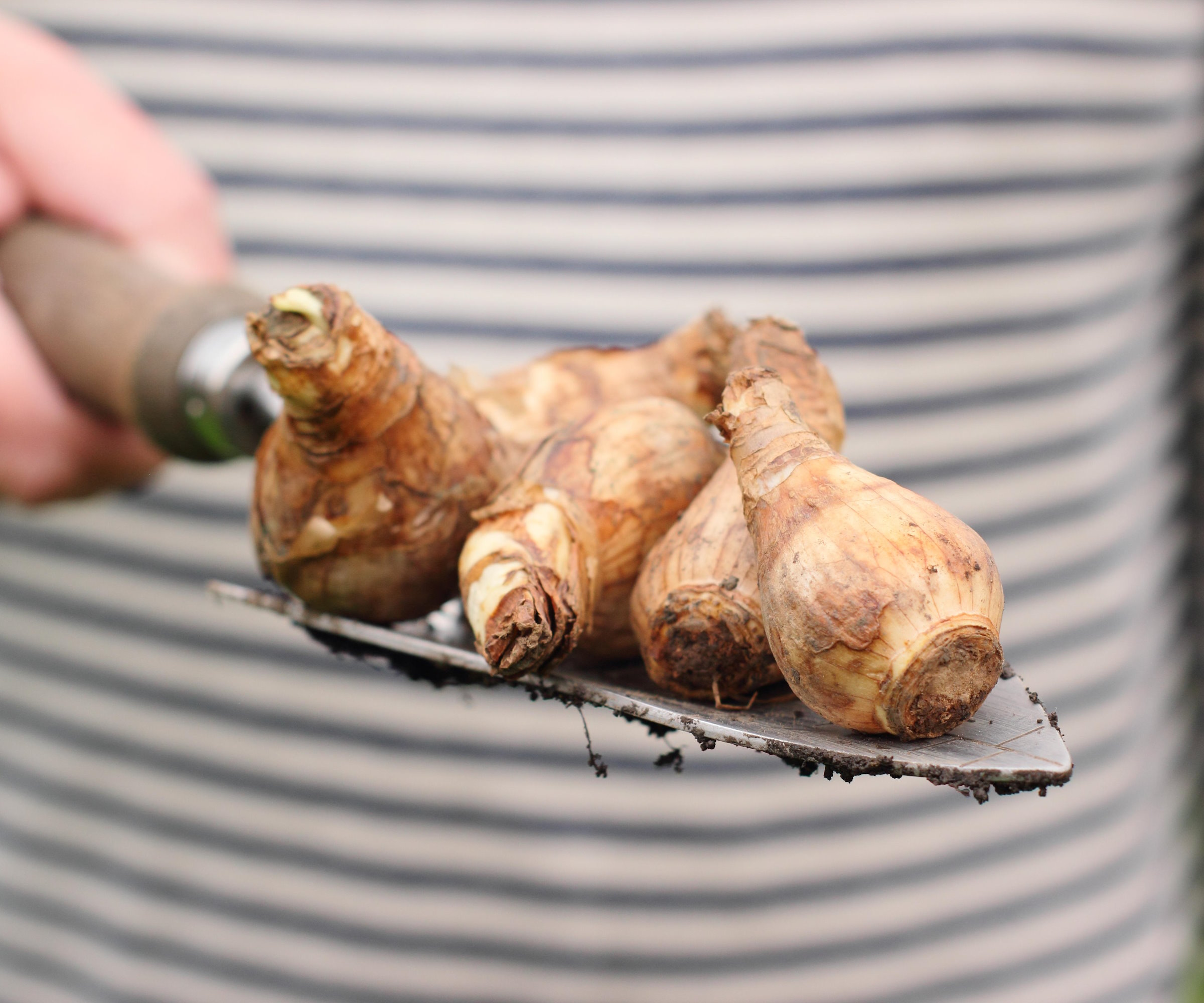
Daffodil bulbs come in various sizes
How deep to plant gladiolus bulbs
Gladioli are fantastic tall blooms and types of gladioli come in many shades that can add heights to beds or borders. Gladioli grow from corms rather than bulbs, but are often sold alongside other popular bulbs to plant in spring. A corm is a storage organ that contains all the food and energy to survive over winter, ready to grow again once planted.
Good corms should be large and firm, it is normally the case that the larger the corm the bigger the number of blooms you should expect, while it will also flower earlier. The time to plant gladioli comes in spring, once the frosts have ended. If you want to know how to plant gladioli bulbs, large corms should be planted around six inches deep in the ground, with smaller ones only requiring a depth of closer to three inches.
See the range of gladioli bulbs at Burpee
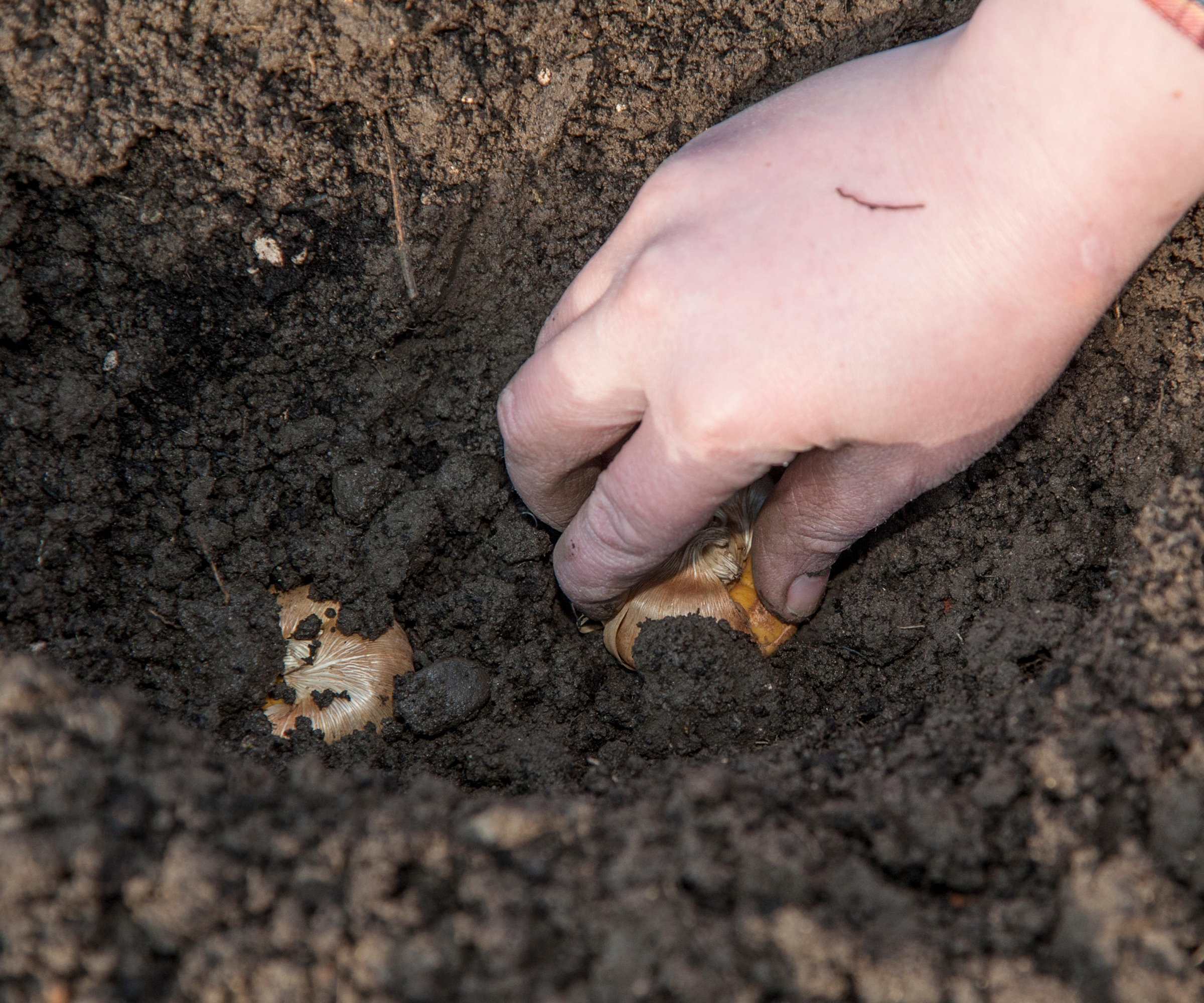
Gladioli grow from corms planted in spring
How deep to plant iris bulbs
Irises are fantastic perennial bulbs to plant in the fall. Some irises can be planted from rhizomes, however there are many bulb irises that are hugely popular. These include ‘Iris reticulata’ and Dutch irises. The former are very diminutive and only need to be planted around three inches deep. Dutch iris bulbs should be planted at closer to six inches deep.
At this depth the bulbs are more guaranteed to flower in following years. They can be undisturbed during dormancy while still getting the cold period they need to bloom. Smaller flowering types are often planted in clumps or naturalized in grass, while Dutch irises can be a great option for cut flowers.
See the selection of iris bulbs available at Dutch Grown
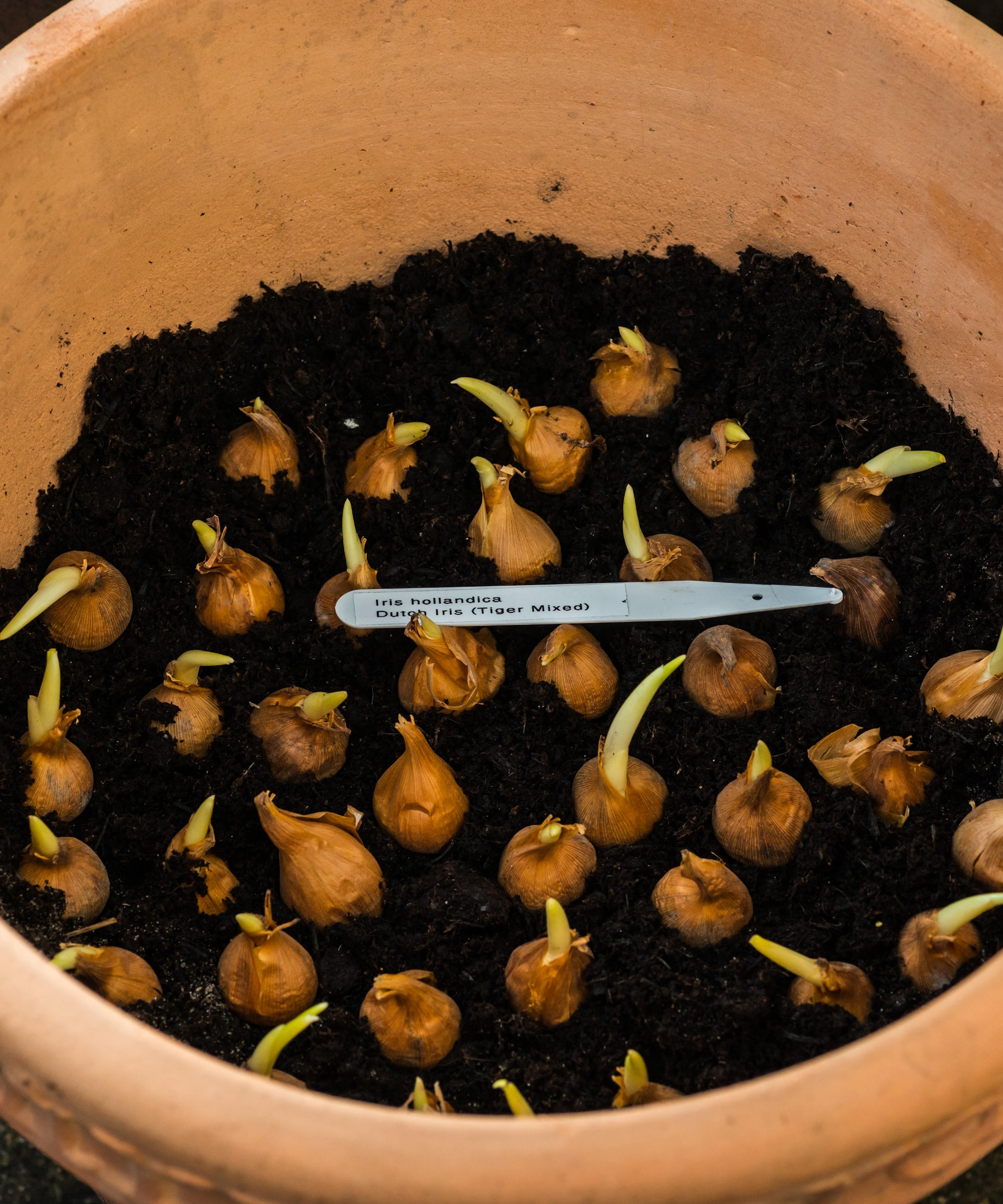
Irises can be planted close together in containers
How deep to plant hyacinth bulbs
Hyacinth bulbs are another that are planted in fall ready to put on a stunning display of color and fragrance come spring. The bulbs are very round in shape - remember that the plumper the bulb the larger the bloom will be - and they do also need to be planted with the pointed end aiming at the sky.
To plant hyacinths dig a large hole 6-8 inches deep with at least three inches between each bulb. It is important to take care when handling hyacinth bulbs, as they can irritate the skin. Hyacinths are a bulb that can be forced indoors to flower early, and this involves a completely different planting depth. To force bulbs, simply plant the hyacinth in compost but leave around an inch of the top of the bulb visible.
See the range of hyacinth bulbs at Nature Hills

Hyacinth bulbs should be handled carefully
How deep to plant allium bulbs
Alliums come in a huge range of sizes, there are allium varieties that can reach up to over a metre in height, and the depth you plant the bulbs will depend on the size of the plant. The larger the plant will be, the larger the bulb you plant is. The bulb sizes range vastly, with the largest around three inches in diameter.
Allium bulbs are planted in early-to-mid fall and also have a pointed top that must face upwards when they are planted. The smaller and medium-sized varieties of alliums, including the hugely popular ‘Purple Sensation', are best planted 4-6 inches deep. Larger varieties need to be planted at least six inches deep.’
Discover the range of allium bulbs available at Dutch Grown
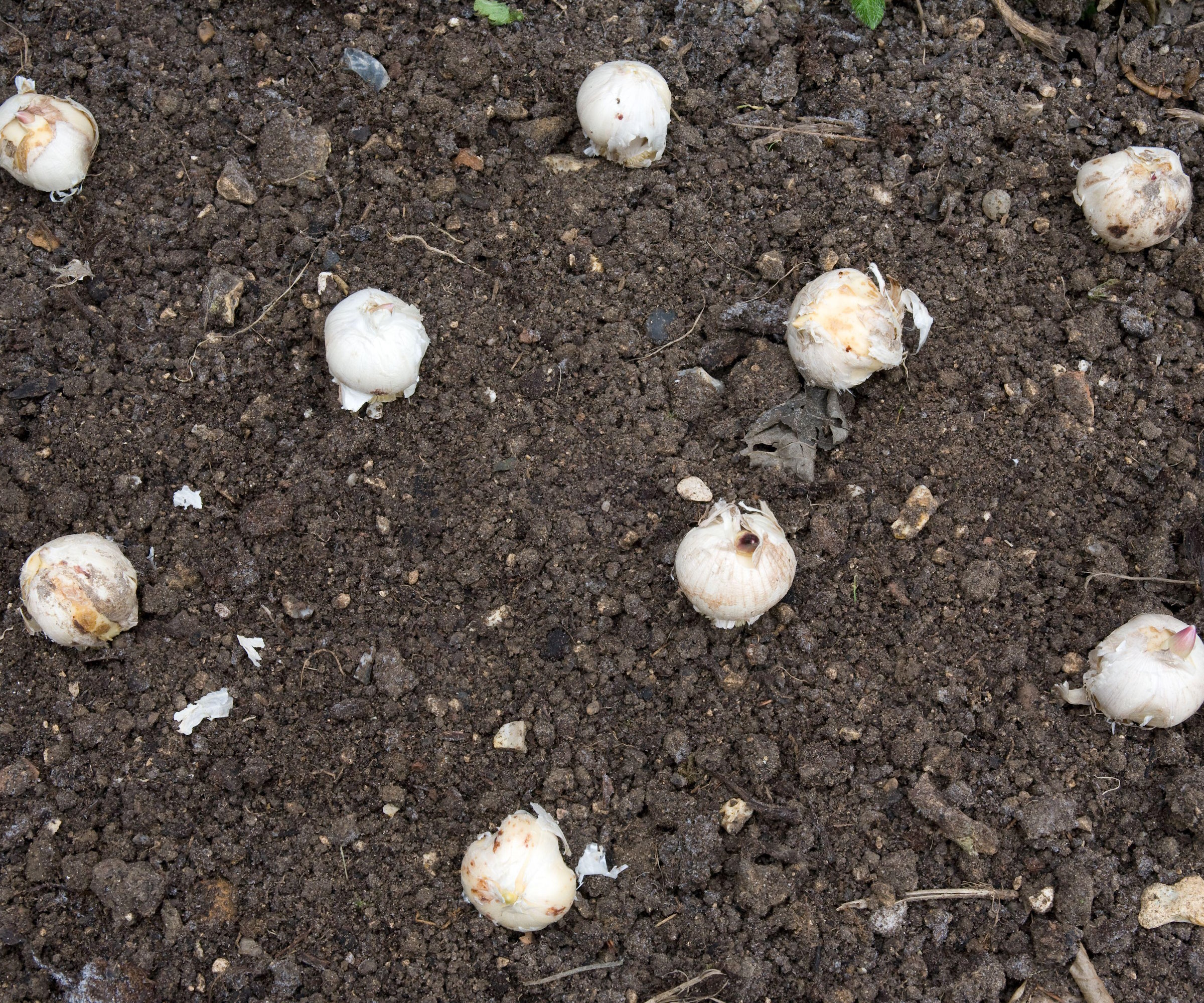
Alliums come in a range of different bulb sizes
How deep to plant lily bulbs
Lily bulbs are summer bulbs that can be planted in fall or spring. You are rewarded with large fragrant blooms come summer, they are perfect for borders or container gardens. It is often recommended to plant lilies in clumps and they do want to be planted quite deep, around eight inches in the soil.
Drainage is very important for lily bulbs, so lots of people plant the bulbs onto a layer of grit. It is also always vital to remember to plant them with the basal plate downwards and the pointy end facing upwards. By planting lilies so deep, it helps to keep the plants stabilized as they grow and can mean you do not need to stake the plants.

Lily bulbs like a layer of drainage materials beneath them
How deep to plant crocus bulbs
Crocuses are another favorite early spring flower and they also technically grow from corms. Plant crocus bulbs in fall before the frosts arrive and the ground freezes. Crocuses want to be planted around four inches deep and three inches apart in free-draining soil.
Squirrels are attracted to crocus bulbs, along with other pesky rodents, so planting them deeper will stop squirrels from digging up bulbs. You can lay chicken wire over the bulbs to protect them, while there are natural ways to get rid of squirrels using strong scents like coffee grounds, garlic, or smells emitted from plants in the allium family.
See the varieties of crocus bulbs at Nature Hills
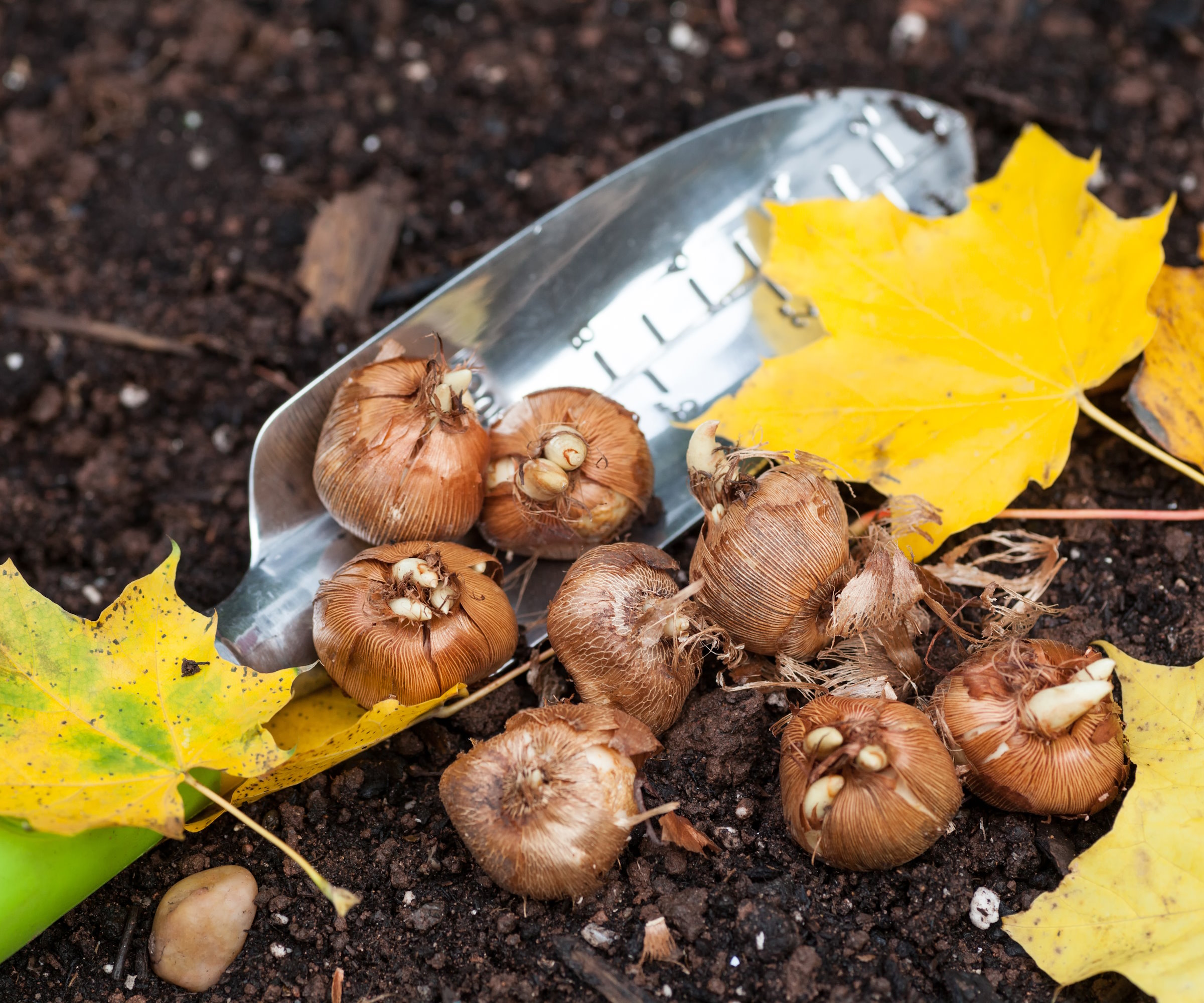
Crocuses want to be around four inches down in the soil
FAQs
Can bulbs be planted too deep?
The danger of planting bulbs too deep is that they flower too late, or do not flower at all as they risk rotting in the ground. Bulbs planted too deep are known to only produce foliage and not blooms.
What happens if I dont plant bulbs deep enough?
Bulbs planted too shallow can push their shoots through the soil too soon, which can then be damaged by cold temperatures. Also, the shallower the bulb is planted the more at risk it is of being eaten by squirrels, or other pests who take a fancy to bulbs.
Naturalizing bulbs as part of a bulb lawn is a recent popular trend. Many bulbs can be planted in fall to achieve such a spectacular canvas, using the likes of crocuses, snowdrops, daffodils, alliums, and snakeshead fritillaries to create a dramatic show of bulbs that will grow through a lawn every year.

Drew has worked as a writer since 2008 and was also a professional gardener for many years. As a trained horticulturist, he worked in prestigious historic gardens, including Hanbury Hall and the world-famous Hidcote Manor Garden. He also spent time as a specialist kitchen gardener at Soho Farmhouse and Netherby Hall, where he grew vegetables, fruit, herbs, and cut flowers for restaurants. Drew has written for numerous print and online publications and is an allotment holder and garden blogger. He is shortlisted for the Digital Gardening Writer of the Year at the 2025 Garden Media Guild Awards.